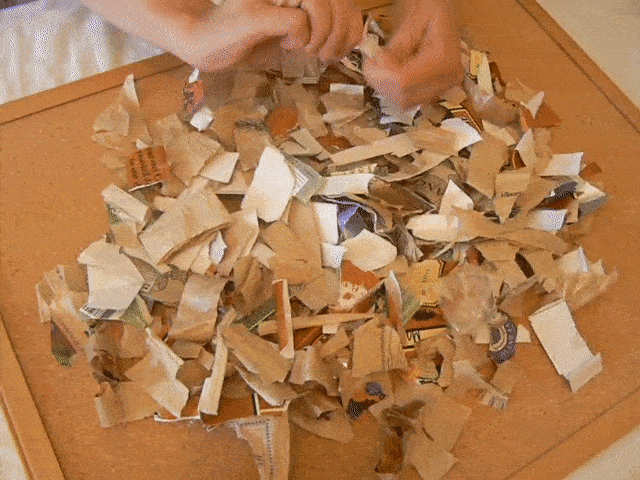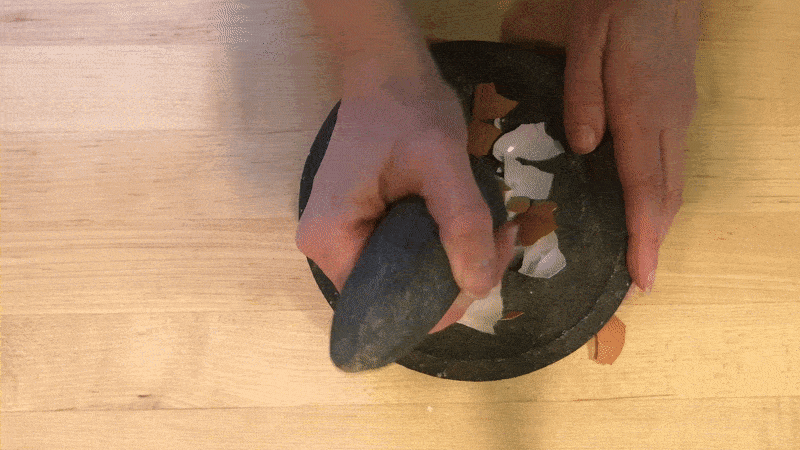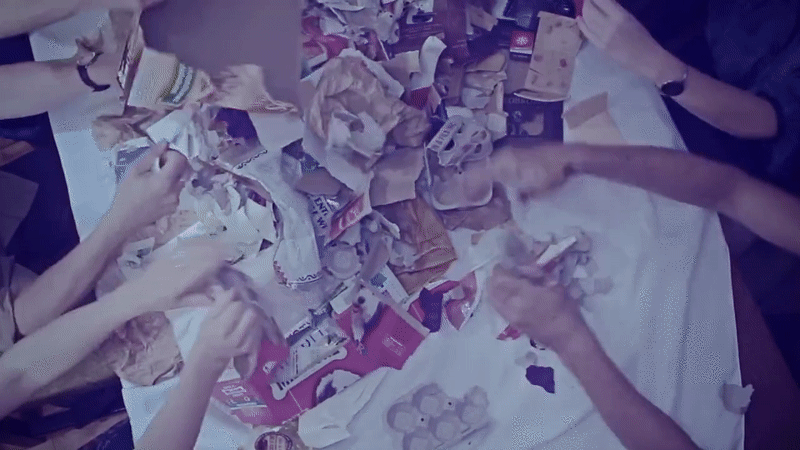Activity: Thinking about Food Waste
Pamela Tudge
The Eat, Waste, Make Project
Learning Outcomes
After reading and discussing this text, students should be able to:
- Describe food-based waste and why it is an issue in our society.
- Articulate ways critical design can increase the visibility of waste.
- Identify variation in the food-based waste in their own homes.
Exploring my domestic food-based waste through critical design learning encounters
We all produce and manage waste to varying degrees, across our living environments and daily life. Discarded edible food—food waste—is gaining significant attention globally as a contributor to climate change, through the production of methane gas in landfills. The United Nations (UN) estimates that, globally, humans waste about one third of all food produced, a resource that could be used to alleviate global hunger.
Imagine you are preparing a meal at home. Think of all of the materials that you might throw out. All of the food remnants, like vegetable peels, is food-based waste, but so is food packaging. Few government policies limit the types of materials companies can use to package their foods. Instead, most policies target consumers, through efforts such as banning or limiting the use of plastic bags. Packages remain important because they protect food in transportation and enable promotional messaging, corporate branding, and the communication of critical consumer information (e.g., nutrition values and ingredients). However, the environmental impact from plastic pollution is significant, polluting oceans and threatening species. Little (less than 10%) of our discarded plastics are ever recycled. How can we reduce our food-based waste?
For most of history, women’s knowledge of food and their labour in the kitchen determined what became domestic waste. Contemporary studies show that responding to food-based waste remains women’s work. Previous generations valued the reduction of household waste, as it was essential to the economics of North American households. A post-war cultural shift in the 1950s, however, redefined waste as a sign of privilege and modernity. The implication of this change in values and behaviour is the loss of food-related knowledge, devaluing this critical work. Today, there is little monetary incentive for households to engage in the labour needed to reduce food-based waste; instead, a renewed ethical value of care for the materials of food-based waste is called for.
Through the Eat, Waste, Make project, I explored my relationship to food and waste and extended my findings to teach others through public workshops. As a food studies scholar and a woman, I began researching my topic through my own practices. Designers are experts in materials, and critical design is an approach to design that focuses on making things that challenge the role of products in everyday life. Identifying my waste through the food I eat, and exploring the materials through critical design methods, provides a different kind of attention to what I discard, allowing me to develop a mindful relationship that extends taking care of the materials I encounter. The learning encounters I create (and depict in the GIFs below) form a method for developing care and enabling material visibility. Caring for materials means doing things differently, such as composting non-edible peels, repurposing glass, or limiting the use of plastics. Achieving a better practice with these materials requires enhancing my attention and acknowledging the individual waste materials that I encounter. Finally, through the learning encounters, I can identify the significance of labour and reflect on the unique care women held for generations to repurpose materials, re-use food waste, and ultimately prevent waste from entering the environment.
Learning Encounters at Home
For this activity, you will conduct exploratory research and respond to the questions in each step. At the end of the learning encounters, use your responses to write a reflective paragraph on your research, noting any new questions or ideas from your food-based waste exploration encounters.
Have ready the following material:
- Construction paper, poster board, or anything similar (but not foam core!)
- Wood glue
- Scissors
Step One: Collect Waste
Identify and collect ten pieces of material from your recycling bin, compost, and garbage that is are forms of food-based waste.
Lightly clean any packages and arrange the waste on a large piece of paper.
Question: What types of waste materials are in your home?
Step Two: Document Waste
Document the waste using a digital camera; take a single picture of all the materials together and separately.
Create a portrait with one chosen piece of material (e.g., a banana peel, a yogurt container)
Question: What material did you choose for your portrait, and why did you choose it?
Step Three: Break down your waste
Break down each piece of waste into smaller pieces, using scissors or your hands.
Mix the materials.
Questions: What colours, textures, or shapes can you identify with the materials together? What food products can you identify from the pieces?
Step Four: Make a Collage
Using the paper and glue, arrange all the pieces, including food waste, onto your paper.
Make any design you choose with the pieces, and allow glue and materials to dry.
Questions: How do the materials in your collage reflect your food practices around cooking and eating? What transformations to food practices do you feel you can make in your home to reduce waste?
Additional Resources
CBC News. People waste way more food than thought, UN finds. Here is how Canada compares. March 4, 2021.
Dunne, A. and F. Raby. Critical Design FAQ.
Environment and Climate Change Canada. Taking Stock: Reducing food loss and waste in Canada. June 2019.
Food and Agriculture Organization of the United Nations (FAO). Food Loss and Food Waste.
“Plastic Wars.” Frontline Documentary. Produced by Rick Young, Laura Sullivan, Emma Schwartz, and Fritz Kramer, PBS, USA.




